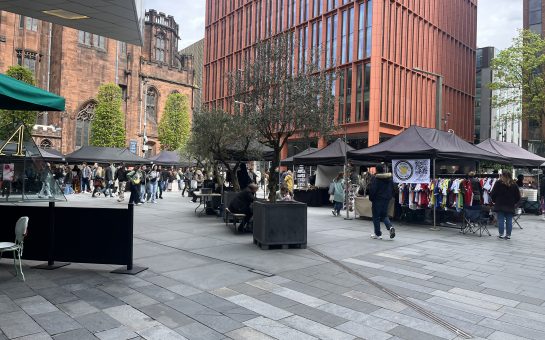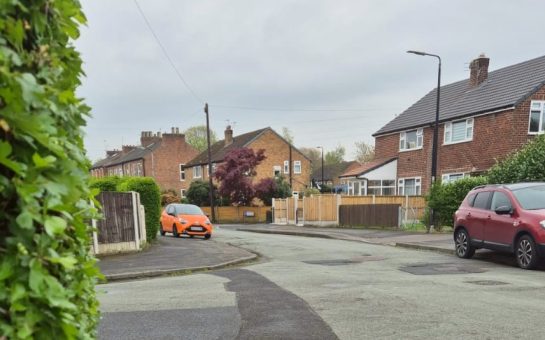For more than a century the Clock Tower of Manchester Town Hall has gazed majestically out over the city.
The ever-present and yet enigmatic chime often goes unnoticed by the citizens it casts its watchful eye over.
What people might not be aware of is that Mancunians can ascend the stone spiral staircase of the iconic gothic tower and cast a panoramic eye across the city.
Visitors have the opportunity to see the inner mechanics of the clock, stand behind its face and clamber around in a building that’s been preserved virtually unchanged since it opened in 1877.
The unique tours begin by entering the Town Hall directly underneath the Clock Tower.
Visitors walk over mosaics of Lancashire roses and gold, watched over by marble status of John Dalton and James Prescott Joule – scientific fathers of the city.
The main bell of the tower can be lowered right down to this ground floor for maintenance. Situated at the top of the tower, Great Abel takes its name from the mayorof Manchester at the time – Abel Heywood – which is inscribed onto its body.
A rickety lift is taken to the fifth floor of the Town Hall. In one of the many expansive corridors of our great civic building an innocuous little door betrays the narrow, winding staircase up to the bell-tower.
Although there are 173 steps to climb the tour is structured to provide respites in various rooms within the tower. The first of these is the ringing room.
In the mechanism room, the second secret door that opens to the curious eyes of paying visitors, the flat bed train controlling the chimes and clock hands can be seen. Today there are 13 ringing bells and 10 static bells in the belfry, which isn’t open to the public. When the Clock Tower first opened it was the police who rang the bells, but now the ringing is all done electronically.
Built by Gillett & Bland of Croydon, the contraption of dials and bellows takes up a third of the room.
The clock itself is accurate to within 5 seconds and it is said the council don’t start their meetings until they’ve heard its chimes.
As the visitor climbs the wind starts to whistle through the golden stone and arrowslit windows. The ascension begins to feel slightly claustrophobic, the lack of a bannister heightening the climber’s sense of unease.
Those with fear of enclosed spaces or medical conditions that may be exasperated strenuous exercise are not recommended to take tours of the Clock Tower.
While the ringing and mechanism rooms were lit with electric lights the dial room is illuminated by LED lights recently installed by the council.
At the top of the tower only the guide’s tour gives any indication of the full extent of the rafters. Being so close to Great Abel’s booming ring could damage hearing, so visitors are asked to cover their ears.
On November evenings Manchester’s weather is intensified among the stone angels and arches.
Rain, wind and sleet lash Alfred Waterhouse’s neo-gothic masterpiece as the astonishing view is taken in.
And what a view. On one side Beetham Tower and Great Northern glitter, from another City Tower rises towards the moon. Manchester, the great industrial town, stretches out in every direction.
It’s definitely worth the climb.
Manchester Guided Tours run on every even numbered day between November and December. www.manchesterguidedtours.com
New Manchester Walks go up the Tower every odd numbered day from November 23. www.newmanchesterwalks.com
Clock Tower tours cost £9 with either company plus a booking fee.
For more on this story and many others, follow Mancunian Matters on Twitter and Facebook.



